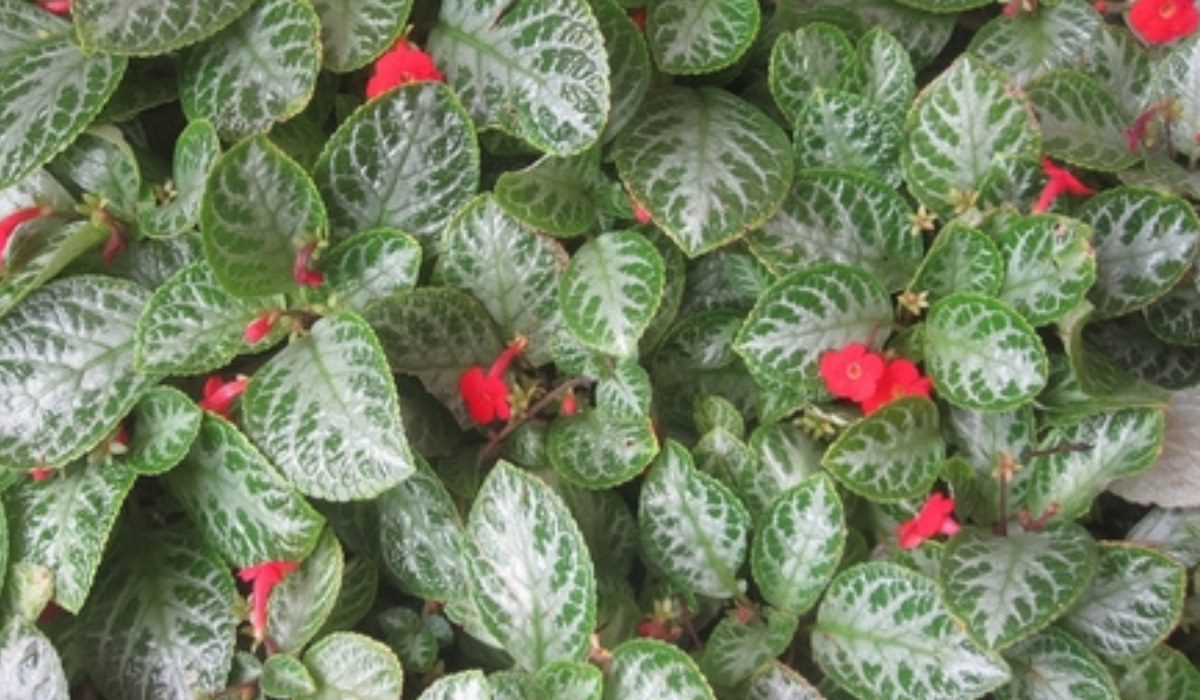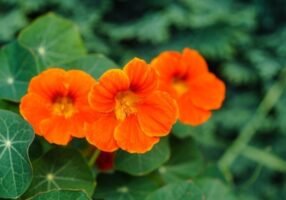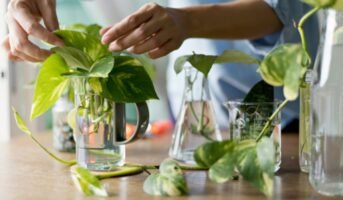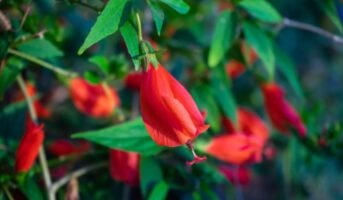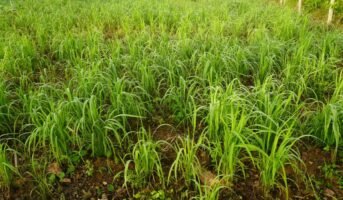Episcia reptans, commonly known as Episcia or flame violets, is a species of trailing plants native to central and south America, Brazil, and the West Indies. They are known for their miniature-sized, deep, vibrant-coloured flowers and lush green leaves that have a unique ribbed texture.
If we are being dramatic, the episcia can be termed as the brother to the African violet plant that never got its chance to shine. Unlike the African violet, the episcia needs a lot more care and grows in a very special way, which is complicated, but not hard to understand. As much as you would love for the episcia violet to be a part of your indoor or outdoor garden, it is strictly suggested to stay away from this plant if you are a beginner.

Source: Pinterest
Episcia: Key facts
| Genus | Episcia |
| Scientific name | Episcia reptans |
| Plant type | Ground cover, household |
| Growth rate | Slow |
| Soil type | Well-drained, moist |
| Flower colour | Bright shades of yellow, orange, red |
| Mature size | Height- 8 in. to 1 ft.
Width- 1 ft. to 2 ft. |
| Nativity | Colombia, Brazil, Venezuela |
| Life cycle | Perennial |
See also: Jasmine and its benefits
Episcia: Features
Episcia reptans plant is one of the most visually stunning plants that you can have as an addition to your collection with little to no compromises. It is small enough to be kept indoors but also large enough to be planted outdoors too.
With its lush green leaves and incredibly vibrant trumpet-shaped flowers that look visually stunning, it looks great on a tabletop. It grows upto about 8 inches tall, and the oval leaves grow into a rosette that is about 2-3 inches long.
The colour, depending on the variety, can either be green and copper brown, bronze, or even green and silver.

Source: Pinterest
Episcia: How to grow
Although it is a tricky task to grow an Episcia plant, our fellow anthophiles already know that it’s nothing new for them. As for potting, pot it like an African violet. Growing and caring for it is the tricky part.
As far as propagating the Episcia goes, it is best to propagate the Episica violet in springtime. Take single-leaf stem cuttings and dip the cut end in water. Dip it next in a rooting hormone powder, and then put the stem in a moist potting mix and firm the mix around the stem so that it stands upright.
Enclose the pot in plastic to maintain humidity, and you’ll see roots forming in around a month or so.

Source: Pinterest
Episcia: How to maintain
Light
Episcia violets require plenty of light, but direct exposure to the sun will cause them harm. Especially the leaves, which might fade due to sunlight.
Water
The soil an Espicia is grown in should be moist but not soggy. If the soil becomes too dehydrated, the leaves are prone to developing brown edges and rot. Keep the soil slightly dry during winters as the Episcia is not growing.
Fertilisation
The African violet is uncompromising, and so is its brother. Episcia plants need special treatment, and fertilisation is one of them. A special African violet fertiliser works best. Dilute it to half its strength and feed it to the Episcia once a month when actively growing.
Temperature and humidity
Keep the Episcia in average household temperatures above 65 degrees Fahrenheit. Lower temperatures may cause browning of the leaves, and the plant might die if temperatures fall below 50 degrees Fahrenheit.
Repotting
Repot the Episcia plant once a year with fresh soil and move up a size if the roots have taken the shape of the pot. When it comes to pruning, remove the small, unwanted stolons to allow the plant to develop and have plenty of space. It makes the plant look bushier and livelier.
Pest and diseases
Pests can be quite tricky to deal with, although you won’t have to deal with anything more than spider mites or mealy bugs. A Q-tip dipped in alcohol or neem oil is recommended as soon as pests appear. The quicker, the better. Only use insecticides recommended for the African Violet plant as it is very easy for the plant to be damaged.
The Episcia plant needs high humidity to thrive. This makes them vulnerable to diseases like Botrytis, powdery mildew, and Erwinia blight. Prevention is better than cure, and it stands true for these plants as well. Avoid misting the leaves and try to provide access to good air circulation.

Source: Pinterest
Episcia: Uses and benefits
The Episcia plant poses no real health or non-medicinal benefits. It is strictly for ornamental purposes.
Toxicity
The Episcia is a non-toxic plant and is safe to have around pets and kids.

Source: Pinterest
FAQs
My Episcia has developed brown spots on its leaves. Should I be worried?
High heat and direct sunlight are the root cause of browning, which causes damage to the leaves. Keep it in indirect sunlight, away from humidity, to prevent browning.
Why do the leaves of the Episcia get dull after time?
The leaves should keep their vibrancy if taken care of. Ensure that the plant is not under direct sunlight and move it to partial shade periodically.
Why do the underside edges of the Episcia turn brown?
Before panicking, please understand that this is not a bug issue. The leaves of the Episcia Violet tend to turn brown when the air around the plant is too cold. Try to keep it away from cold winds and winter drafts.
Housing News Desk is the news desk of leading online real estate portal, Housing.com. Housing News Desk focuses on a variety of topics such as real estate laws, taxes, current news, property trends, home loans, rentals, décor, green homes, home improvement, etc. The main objective of the news desk, is to cover the real estate sector from the perspective of providing information that is useful to the end-user.
Facebook: https://www.facebook.com/housing.com/
Twitter: https://twitter.com/Housing
Email: [email protected]
